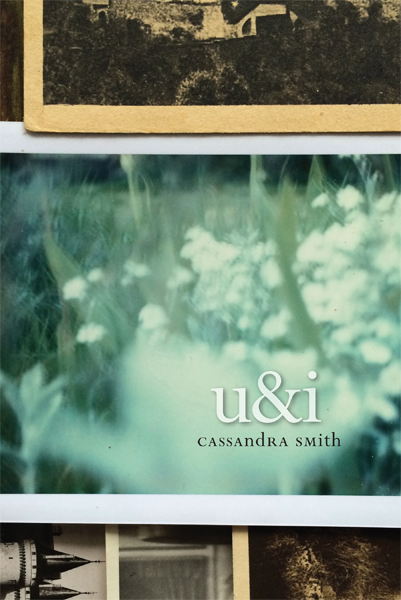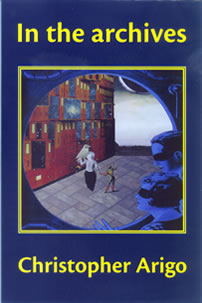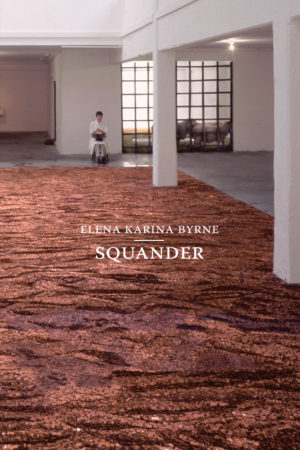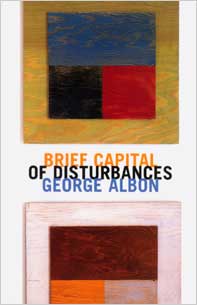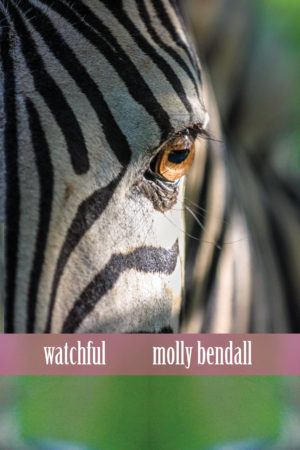Description
u&i is a meditation on the imaginary—what exists and what doesn’t, how does something exist when it knows it is imaginary, how is it to be reckoned with. u&i asks what exists when a book is written. u&i is telling a story to the things that are actual loss. Things that are gone become further proof of existence and not. There is in them a strange insistence on impossibly being. u&i asks what are the can and can’t of existence, as well as the cant of existence—the domestic and repeating cant, as things circle themselves until they think they exist a little more. There is, in u&i, cant as incantation.
Cassandra Smith creates a work that is of rare singular focus reminiscent of Roland Barthe’s A Lover’s Discourse. I remember my first reading of his book as a college student, finding myself both witnessing and being inside of love and of the book. I was in love with not a person but rather an idea, a concept, an inquiry of love itself. How did I find myself here again at 45 years of age? I am elated, grateful and perhaps even stricken for having read, for having received the gift of U&I. Beautifully written and contemplative, I cannot help but feel a sense of devastation upon arriving as a reader.
Truong Tran
Cassandra Smith writes with the elegance, joie de vivre and brutality of a unicorn.
Bhanu Kapil
u&i adeptly traverses the ethereal and radiant boundaries between “to leave the meadow very alone” and to wander as a unit, to twin, to see in tandem. Is it possible to sustain a dual-vision when the “simple logic of one or two” is never simple? What happens when one is divided from oneself, from one’s other? When the notion of beloved becomes impossible or impossibly near? In this delicate series of meditations, which read like dream confessions, Smith adroitly excavates conundrums of dualism and adheres to the project of constant address or gesture toward an ever elusive “us.” Is the “we” to which one cleaves a mythical species? This book is a lovely secret beginning and ending in a wood—a rare book of vanishing devotions to unknowing.
Laynie Browne
About the Author
Reviews
Excerpt
Cassandra Smith is a poet and visual artist. She has exhibited her book and photography installations in Oakland, San Francisco, Sacramento, Portland, Chicago, and Memphis. Various writings and poetry have appeared in The Offending Adam, comma, poetry, Saginaw, Joyland, The Medium via The Volta, Pilgrimage, Glitterpony, With+Stand, and others. You can visit her web site at www.moloprojects.org.
A brief interview with Cassandra Smith
(conducted by Rusty Morrison)
1. Cassie! How to begin an interview with you!? I’ve known you so many years, and I have such enormous respect for your canny insight into the art of writing and trajectories of poetic practice in our current era. And Omnidawn has been so lucky to have the great benefit of your prowess as an editor and book designer for us. It is a deep pleasure to be talking with you, now, not just about poetry, but about your poetry. I’m very excited that you have a manuscript coming out soon with Called Back Books, and we are thrilled to be publishing u&i, which does share with your previous poetry, in tone and tensions, some of the irreverence your work reflects in relation to the ‘lyric I.’ But this text, u&i, seems be using a very different lens of technique or techniques, as it delves into that territory or territories. Can you speak to the ways that this work disarms, diverts, destabilizes a reader, as well as the agent of voice, which is nearly but never entirely disarmed of its agency, even as the sentences read with such luminous clarity?
i love you so much rusty. you, and all of omnidawn, are my greatest love and excitement of how to have a poetry family. i am overjoyed and indebted for everything i have learned and held with you. and this question! this question is so precise i had to read it and put it away and read it and save it for last. perhaps an easy beginning is the idea of a singular “i” in u&i. u&i is a character in reference to uni, and to unicorn, but it is not exactly a single person; the how and why and where of a person is not at all important in how to love, in how to understand the moment between have and hold. there is only you, you&you repeating, in how i love. you&you begins to transform after the initial moments of learning another. the you-as-separate transforms into the u&i of familiar twoness, &this togetherness becomes a distinct beast, both majestic and intangible. early on in the manuscript i wanted to shift the language around to do away with the need for pronoun agreements. i made the sentences structured so they could be read as both “i” and “we,” but at some point in the narrative this stopped being important. there are places the moments and the together of them would shift, when u&i was singular and lonely and calling out for the companionship of the previous possible multiple; then others when u&i were insistent on holding each other closely through the landscape, on the impossible insistence of being we. again, this question is so everywhere&large. i like lingering in the mystery of what may or may not disarm&divert&destablize a reader. i want to be with everyone who reads this book, every u&i a different conjunction.
2. You are deft in your wielding of what seem to be directly stated experiences of feeling. Your language is immediate and compellingly simple. But the slight swerve of your language demonstrates how much complexity there is in even the simplest heart-felt moment of expression. I should start by just quoting the first poem’s title,
“with which memories are you most often afraid?”
which proposes itself as a question as it projects an understanding that any emotion comes jacketed by memory. Because you begin the sentence in that prepositional positioning, that “withness” proposes a two-ness to any answering. Could you say more about this question? and/or any other moment in the work in which you found that the language of the poem was establishing with you a twoness, a riddling of where you’d begun from?
it began as a joke, this first title. the ‘with which’ and reference to ‘with witch’ was an initial summoning of the magic&imaginary (and i say imaginary with a deep and uncertain belief in altered states of knowing and being). i try as often as possible to live within the altered moment of possible reality. a lot of this book is navigating the line between child-like wonder and the traumas that collect over the years. it took six or so years to know how to write this book, and there were so many deaths and destructions (both internal and in the world) that left me lost. the secret answer to the title question is at the bottom of the page (roman numeral i, in place of pg.1), and how when i found it i wanted to paginate the full book in roman numerals for this moment, the other moments for which these numbers might sometimes become a third poem/inquiry on the page. i alone. i, alone, is the memory that this i, or this u&i, or this imaginary creature, is most often afraid of. the final poem-title answers this also, the riddling of where i’d begun from and the circular trajectory of the narrative. half-way through writing this book i’d found out that a friend had died the spring before. he had been the early everything in how i learned to allow myself to exist in language. i stopped writing for three years. i stopped writing for three years except for letters i would write to his father and erase each night before sleeping. the last poem-title began with wanting to have him in this imaginary place with me, where we happily ever aftered the realness of u&i, (another of the language plays here with u&i: his name was [is? this question of what exists when it doesn’t] vu, and i often as artist went by violet. vu&vi.) i needed the place where we were us.
there was a delicate intention in the wording of “once you and i were together,” the dual meaning of the line which, within the content of the poem, is a singular glimpse of two-ness; a veryreal, physical, non-unicorn moment of driving in a car with another someone, how you and i exist as apart and together; but, again with two-ness and riddles, there is an uncertain distance between this once as the implied happily ever to continue, and the veryreal finality of ending. how only once.
3. There is so much that I’d like to ask you to talk about: the u&i in relation to the uni, the mythic, the cant, as you call it, of incantation, the spell of what can and can’t be spelled into text, the placement of ‘here’ in a constantly shifting landscape of the imaginal, which both masks and marks trauma. Trauma as language. Your work seems to me to forward so much of the lineage of Gertrude Stein. yet it reminds me, too, of a story I read about Elizabeth Bishop, I don’t know if it’s true: she had a pet toucan she named SAM for the three aspects of poetry she most revered: spontaneity, accuracy, mystery. So, this is a bit of an open-ended question. Can you speak to any of these dangling threads? Any that appeal to you?
u&i is a meditation on the imaginary. what exists and what doesn’t, how something exists when it knows it is imaginary; that strange insistence on impossibly being; how to reckon. there are establishing rules, boundaries for a place that doesn’t exist. it is a strange logic; a strange math. it builds itself from the ether, so there are no foundations of truth. there is cant as a language: “a cant (or cryptolect) is the jargon or argot of a group, often implying its use to exclude or mislead people outside the group.” can’t as not existing, &its (the non-existence’s) negation, its insistence because it is still a language that can be spoken. can’t as can’t do this anymore runs throughout the book, between lines of ‘is this one, or two, or everything or nothing or nonsense.’ cant as canter, how to continue. how to continue if cant, our hidden language, is the only thing that proves we exist. cant as incantation, how a thing is spelled. cant as a language of existence and nonexistence; what exists when a book is written. there are loves and deaths in the book. they get entwined in the narrative and become another way to speak about what is and isn’t. how to not admit loss but how this loss&lost is part of how to exist. it is telling a story to the things that are loss. the things that are gone have become further proof of existence and not. they are a distant and intangible place to retreat to and then they fail themselves. they don’t exist. and if they don’t exist, where do we exist when we have retreated to this created place of extinct.
4. Could you talk about any writers &/or artists &/or thinkers who have influenced you in this work? (in what direct or indirect ways have you felt this occur?) And/or could you talk about who are you reading currently? With whom do you feel a kinship or a provocation or…?
there is the moment i first read the annotated lolita in an early literature class. lolita itself is an important and influential piece of literature, but it was the added 150 or so pages of notes with secret references and how-so’s and whys of words that made me want to learn and collect my own mythological autobiography into a completed book of invented language. the early largeness of how and why. this was the nesting lesson but then there was life and mills college and then the easiness of finding treasures at spd. spd’s warehouse is huge in influence. truong tran and laynie browne at mills were voices of intimate and articulate love&language i try to hold always when i begin a writing project. and you, rusty. the conversations with you, both intimate and professional, about poetry and language and why; how often you were there with just the right word to compel me into a further more. i could list all of the books on these shelves, all of the books on other shelves i have not yet saved for. kenneth patchen in the largest voice of my tremors. how to love through utter heartache of the world.
there was a time i went to sfmoma, in 2002, and they had a judith rothschild retrospective. lots of mixed colors on flat textures, sometimes cut out leafish looking bits of color on a white canvas beneath. i sat on a bench in front of one of these (specifically one) and let myself get so angry. art angry. artfight angry let’s fight about why this/why this/why this. and rozzell (who also makes an appearance in the answer to question #6 below), came and sat with me on this bench and wondered my furrowed brow. “i don’t know why this is important.” and he: “maybe she just likes yellow.” and then everything i’d taught myself to see in photographic black and white became a flood of every color and how-to and possible. the moment of learning “i need this to exist so i should make it.”
5. Would you tell me a bit about yourself? Anything you are willing to share that might not be in your short bio that is published in the book?
i’ve recently taken a break from the all-of-my-life parts of poetry. there were a lot of smaller and larger life traumas that had collected and i needed to move far away and find the place to reckon them; to learn how reckoning feels. to navigate the map of heal&reckon so that i might be a better voice of it to others who are still unsure. in the fall i am beginning a masters program in counseling. (i often forget that most strangers and others do not yet know about the all-magic and beauty and brilliance of my mother); my mother is a transpersonal psychologist. she was mostly this person throughout my life, but she did not earn a degree nor begin a practice nor find her voice&presence of this until both of us were grown ups. i think mom was fifty the year she mastered cancer and mastered psychology. but: my weird (weird is the best word) mom and i have been through and thought through a lot about how&whys of people. the deepest route of us has been in wonder&figuring how to make the shit parts a place someone searching might be okay to wade through. this is me poet speaking, but what i mean is: so many people can become broken from learning how to live a life. i say broken but i only mean soft clay. things that can be mended without keeping a permanent fracture. lately i read a lot about physics and psychology and get lost a bit in the possibility of cells being made of vibrations, these vibrations being made of all of the cells before, thus memory, thus lessons, thus maybe humans or earthy creatures all get to ration&rationalize their every ancestors’ moments due to vibrations which is sound which is music.
(there’s this great essay about energy psychology and trauma here:
http://energypsych.com/readings/energy-psychology-and-the-resolution-of-trauma/)
6. You were instrumental in the selection of the image that is used in the cover design for this book. Would you describe your considerations in your arrival at the choice for this cover image? How does this cover align with your intentions for the book?
u&i began in so many places. this is one story:
when i was young i moved to portland to be in love forever&ever. in love is a strange thing in that it is always shifting. soon after arriving, we shifted our rooms and our houses and how to love and how to fight and then we learned how to not fight. he (rozzell medina, a brilliant artist and musician and public organizer and all and all he does) and i would often form bands that would never play. we would name ourselves for each moment of celebration and laughter. one particular night we stumbled upon our final band name: flanby&niners. i’ve since forgotten the etymological history of flanby&niners, but the original agreement was that neither of us was strictly flanby, nor niners. we were each half of both. and, after i moved away to oakland, we would send letters and have to decide whether we were addressing the flanby or the niners of us. sometimes we are each flanby, then niners, but always still we were each half of both. it was such a subtle shift in how to hold a friendship through the ethers. this name of us was soon&excited shortened to f&n, which became the best joke, of f&n as the shape of ‘fun,’ and then f&n as ‘f&effin’n!’ when we were the most of best excited. it was a perfect dual/separateness, this way we could exist together in an imaginary space. being a solitary half of this in oakland was a large part of learning the language and intention of u&i. one of the poems in the book is the daughter we didn’t have. i didn’t know i was writing this book with the moment&memory i hold of not keeping a real creature that would have been exactly half of both. when i wrote through the language of that piece, the larger narrative of u&i changed. the cover image is a collage i put together after the manuscript was finished, of colors and old photo postcard textures i wanted to exist together.
(f&n are still fighting over which half of us took the polaroid of the grasses in our yard.)
Smith’s poems build slowly, weaving a focused meditation on existence, loss, and shared domesticity.
Smith cultivates a sensitive expression of human needs and desire; carnality and social experience are the vantage points by which these poems find orientation.
To read u&i, Cassandra Smith’s frustratingly gorgeous and gorgeously frustrating full-length collection of poetry, is to be immersed in an experience that changes you.
In Smith’s skillful hands, the poem becomes a locus for dialogue, authorship being merely an ongoing process of curation.

